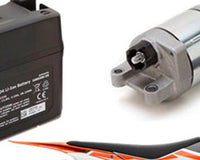Table of Contents
Victron Energy brings you an array of products packed with equal efficiency and ease of use allowing you to generate your off-grid clean energy affordably and quickly.
The combination of a sleek but simple design with the intelligent performance of Victron Blue Solar products makes the installation process seamless.
Victron solar systems feature remote internet-based monitoring and control options, making them the most advanced in the solar energy sub-sector.
Following is a step-by-step guide on installing a Victron solar panel, together with the integral Victron Blue Solar devices necessary to light up your home.
Tools
Ensure you have these tools handy before set-up:
- Assorted screwdrivers
- Drill and drill bits
- Voltmeter
- Pliers
- Wirecutter/stripper
- Marker
Materials
Prepare an adequate supply of these connecting and consumable materials:
- Wires
- Insulation tape
- Cable ties
 |
 |
Pro Tip: Always use the RED wire on all POSITIVE (+) terminals and connections and the BLACK on all NEGATIVE (–) terminals and connections.
Step 1 - Mount and Connect Wires to the Solar Panel
Follow this guide to connect your Victron solar panel safely:
- Disconnect all wires from the battery.
- From the solar panel, connect the positive (+) wire to the positive (+) terminal of the solar charge controller.
- From the solar panel, connect the negative (–) wire to the negative (–) terminal of the solar charge controller.
Observe the following precautions for safe and optimal power generation:
- Pay attention to the polarity throughout the wiring process.
- Mount the Victron solar panel at the brightest position outdoors.
- Depending on your latitude, tilt the panel between 18° and 40° for best exposure to sunlight.
- Use Victron MC4 connectors to terminate and extend the wires from the solar panel to the solar charge controller.
- Use the nylon-coated 10 AWG wire—with its high voltage capacity and greater heat resilience—for a safe connection.
- Tighten all connections appropriately to avoid dry joints and plug-outs.
- Always use trunking and cable ties for secure and tidy wiring.

Step 2 - Mount and Connect a Solar Charge Controller
Victron Solar Charge Controller uses Maximum Power Point Tracking technology to keep your battery from overcharging, thus prolonging its life.
Follow the procedure below to connect your solar charge controller to the solar panel and battery correctly.
- Mount the solar charger on a non-flammable vertical surface with the wire terminals pointing down.
- Leave a minimum space of 30 cm above and under the solar charger for maximum cooling.
- Keep the solar charger in a place with temperature variations of less than 5°C to guard the battery against incorrect temperature compensated charging.
- Connect the wires from the output terminals of the charge controller to your Victron solar battery in keeping with the correct polarity.
- Place the solar charger near the battery while maintaining a distance of at least 30 cm because power efficiency deteriorates with longer DC connections.
- Remove any flammable liquids from the area surrounding the location of the solar charger to prevent ignition-caused fires.
- Never place Lead Acid batteries directly under the solar charger because they produce corrosive gasses, which will damage the charger.
This video is a concise guide on connecting the wires to a Victron solar charge controller.
Step 3 - Connect to Solar Power Storage Battery
Connect the solar charge controller to your Victron solar battery in the following sequence:
- Disconnect all wires from the battery and solar panel to prevent short-circuiting and panel reverse polarity.
- Connect the positive (+) wire from the solar charge controller to the battery’s positive (+) terminal.
- Connect the negative (–) wire from the solar charge controller to the battery’s negative (–) terminal.
- Protect the battery supply with the correct fuse.
The table below shows the appropriate fuse ratings for various solar charger types.
| Solar Charger Type | Minimum Fuse Rating | Maximum Fuse Rating |
| MPPT 150/100 and 250/100 | 120 A | 140 A |
| MPPT 150/85A and 250/85 | 100 A | 120 A |
| MPPT 150/70 and 250/70 | 80 A | 100 A |
Step 4 - Connect the Victron Battery Supply Switch
The Battery Switch ON/OFF 275A is designed for battery systems with a maximum voltage of 48 V.
Follow the procedure below to connect the switch to your power system.
- Disconnect the positive wire from the battery.
- Mount the switch to the surface using your preferred method (surface mount or rear panel mount).
- Remove the side cover from the direction of the approaching wires.
- The Victron Battery Switch rating requires 120 mm² (4/0 AWG) cables on all terminals.
- Connect the positive wire from the battery to one switch terminal and the positive wire from the Solar Charge Controller to the other switch terminal.
- Tighten all nuts and washers properly.
- Replace the positive wire on the positive battery terminal.
Warning!
Never work on batteries unless all connections are turned off. A short-circuiting or faulty connection can cause a fire or battery explosion and result in property destruction, personal injury or even death.
Warning!
Always use protective equipment (insulated tools, rubber gloves, goggles, leather apron) when coming into contact with a Lead Acid battery. Clean any leakage with a mixture of Bicarbonate soda and water.
Your Victron solar energy system is ready for DC use. You can now power your 12 V DC electronics and lights from your battery safely.
Pro Tip: Use a DC adapter before connecting devices with a voltage rating lower than 12 V.
Enjoy Long-term Warranty
The Victron solar panel guarantees up to 25 years of clean energy.
Now you have the most efficient and reliable clean energy system at your full control. And with the integration of smart capabilities such as Bluetooth and Victron Remote Console, you can control your solar system from anywhere at any time.

Frequently Asked Questions
Which Victron Solar Charge Controller capacity is suitable for my Victron solar panel?
You divide the wattage of your Victron solar panel by the total voltage of your battery. If, for example, your solar panel has a rating of 175 watts and your battery’s voltage is 12 volts, then
175 W ÷ 12 V = 14.6 A
Therefore, you require a solar charge controller of approximately 15 A current output.
Can I connect my Victron solar panel directly to my inverter?
Yes, you can. Your Victron solar inverter can convert the panel’s DC to AC, but you will have an electricity supply only during the day. To have a continuous electricity supply at night and during cloudy weather conditions, you need a battery, which acts as the Electricity Storage System (ESS).
Must I use a charge controller?
Generally, you need a charge controller if your solar panel’s output exceeds 5 watts. Or more accurately, you don’t necessarily need a charge controller if your panel’s output is averagely 2 watts per 50 amp-hours.
How can I tell if my Victron solar charge controller is not working?
The most straightforward way of determining whether your charge controller is working is by viewing the LED lights and checking the power output with a multimeter. Too low or lack of voltage output means there’s a fault with your charge controller.
Why does my Victron solar battery run low quickly?
If you connect equipment with a higher load to your battery, it will draw more current within a short period, rendering your battery discharged. This phenomenon is most apparent in seasons of little or no sunshine.














